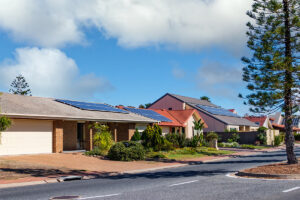Results of a recent survey show that rapidly rising electricity costs are the biggest concern of most Australian households. The survey reveals that of a list of standard household costs, such as transport, health, groceries or water costs, electricity is the cost-of-living pressure to which Australian households are most sensitive.
Households around the country were questioned, in the Survey of Community Views on Energy Affordability, released last month. The results were startling in that they showed that around 84% of households were very or quite concerned about the current cost of electricity. Of this figure, as whopping 44% of people surveyed were “very concerned” about electricity prices.
The result signals overwhelming community concern regarding electricity costs, comparing with 80% of people with the same level of concern over transport costs, 77% over healthcare, 74% food and groceries, with the top five concerns being rounded out with water, at 67%.

While the concerns regarding electricity prices are real, Australian Bureau of Statistics figures show that last year the average household spent 53% more on petrol than electricity. The ABS figures have average petrol spend at $60 per week, compared to $39 a week on electricity and gas in the home.
But why are concerns about electricity trumping petrol, when petrol is consuming the lion’s share of budgets? An obvious answer would seem to be that electricity costs are high in Australia, and rising fast.
Prominent Australian economist Ross Garnaut recently noted that since 2005 Australian households have been hit by the biggest electricity price rises in the nation’s history. And other figures support his observations on an international scale.
A report prepared by consultants CME Carbon Energy + Markets found that in 2012 the average residential electricity price in Australia was $0.25/unit (kWh). This is 12% higher than Japan and the U.S., 33% higher than the EU, and 194% higher than Canada. And since 2012, prices have continued to go up. This report was commissioned by Electricity Users Association of Australia.
Causes of Electricity Hikes
Just what is driving the rapid recent increases in electricity prices around Australia have been and continue to be keenly contested. While she was Prime Minister, Julia Gillard weighed in on the debate, levelling the blame at utility companies, which she said had overspent on upgrades to poles and wires. In Gillard’s words, “gold plating the grid.”
On the other side of politics, current Prime Minister Abbott has levelled the blame for increasing electricity prices on renewable energy. Earlier this month Abbott claimed that the renewable energy target (RET), “is causing pretty significant price pressure in the system”. The RET sets the target of 20% renewable energy generation by 2020.
The Australian Energy Market Commission has estimated that the RET is responsible for less than 1% of the average household electricity bill throughout the country.
Without digging too deep into the politics of the issue, what is clear is that utilities have spent huge amounts on grid upgrades in recent years – in no small part due to rising electricity demand due to the addition of large household appliances like air-conditioners.
These grid costs now do contribute a large part towards electricity rate increases, with the most recent example in Queensland showing that poles and wires upgrades are adding $50 to the average household bill in the state in 2014-15, of an increase of $192. Network costs comprise around 44% of the total electricity bill. The figures were released by the Queensland Competition Authority earlier this month.
One thing is clear, results from the survey show that 84% of Australian believe is important, or very important that their State Government helps reduce energy bills.

Avoiding the Price Hikes
It certainly seems that electricity increases are making their mark not only on family budgets but also concerns about the future. The Community Views on Energy Affordability study found that 53% of respondents wanted state governments to do more to reduce electricity costs for households. However, whether the states can actually do a great deal to bring electricity prices down remains to be seen.
Some would argue that fossil fuel costs look set to continue to increase and the big spends on grid upgrades have already been spent, meaning price rises for the foreseeable future.
At a recent solar industry event, one industry professional was blunt. “Solar really is the only alternative (for households), it’s either wear a $1000 bill every two months or invest in a solar system.”
Optimising a solar system’s design and electricity output, to align best with a household’s needs, will also pay dividends in avoiding the trap of endlessly rising electricity prices. Simple measures like turning on air conditioners, dish washers, washing machines or pool pumps when the sun is shining can also help make the most of solar installations and avoid high electricity charges.
The survey of Community Views on Energy Affordability survey was commissioned by consumer body Choice, the Energy Efficiency Council and the charity, the Brotherhood of St Laurence. The survey was carried out during September, 2013.
Graph sources: Choice energy affordability survey










